What are the most empowering yoga symbols to take your meditation and yoga practice to the next level? Symbols can be used for visualisation in meditation, to surround yourself with and just focus your attention. Plus you’ll learn their meanings – and what they represent. Including yoga symbols for balance.
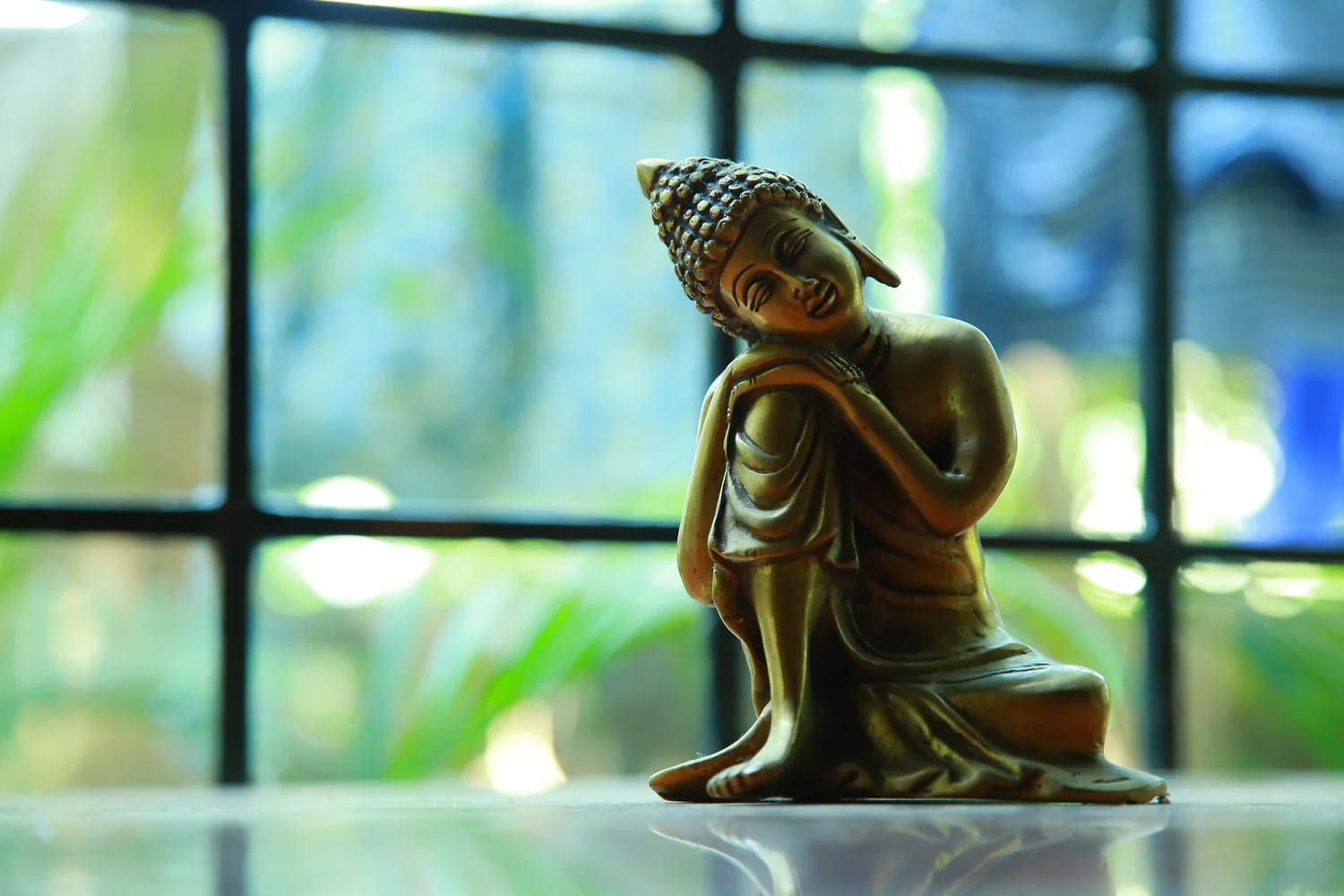
WHAT ARE YOGA SYMBOLS?
Yoga symbols and meanings in particular help bring yogis insight and a deeper understanding of the practice of yoga. You might have seen yoga symbols before on the walls in your studio or in books and imagery. They’re often present on clothing or jewellery, as tattoos, in artwork, and yoga books. While some might use these symbols as mere forms of self-expression, others may actually use them during, before, and/or after yoga. These symbols are not only often used in conjunction with yoga but also often used alongside meditation in which they can be very powerful.
WHY ARE THE SYMBOLS OF YOGA IMPORTANT?
Although yoga isn’t necessarily a spiritual practice, yoga symbols are capable of helping yogis obtain the highest spiritual energy as possible. In fact, it’s said that different yoga symbols can bring concentration, good energy yoga symbols, happiness yoga symbols, all bring a stronger connection with the universe. As a result, these yoga symbols can boost your consciousness as you enter a deep, meditative state in the healing of your seven Chakras.
To gain their benefit, yogis can utilize different yoga symbols in a variety of ways. For instance, yogis may place a certain yoga symbol in front of them, visualize it, or gesture it with their hands during yoga. While using and learning about the different yoga symbols isn’t required, yoga symbols have the capability of enhancing your yoga practice. Some people may see little to no significance with yoga symbols. However, their purpose is in the mind of the beholder.

5 SPIRITUAL AND EMPOWERING YOGA SYMBOLS
Each yoga symbol has its own meaning that makes it unique in the world of yoga. Many of these symbols, however, are not only limited to yoga but also to many cultures, religions, and/or spiritual practices.
The following list includes some of the most important and common yoga symbols to ever exist…
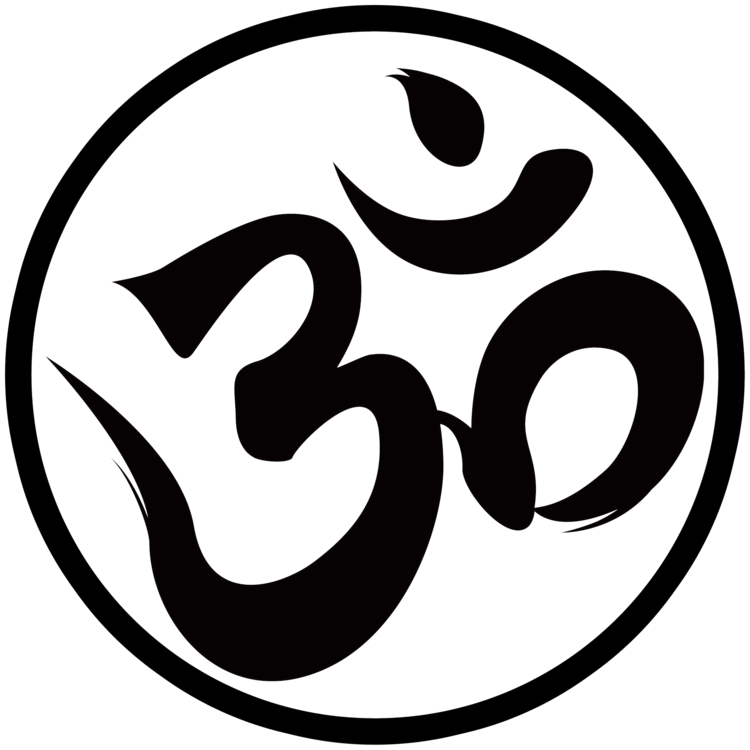
1. OM/AUM SYMBOL
The Om or Aum yoga symbol is one of the most sacred and powerful mantras. It symbolises the consciousness of the universe or the sound of the universe.This yoga symbol represents the “om” sound that people often repeatedly make during meditation to gain focus. Likewise, this word is often said before or after yoga asana. The om is also sometimes chanted at the end of prayers and before sacred verses and names.
The word “om” or “aum” can be broken down into three separate meanings:
A (aahh): The waking state. Represents the universe’s creation and our blissfulness with existing
U (oohh): The dreaming state. Represents our spiritual existence beyond our physical bodies
M (mmm): The deep sleeping state. Represents the spiritual forces of the universe and the connectivity it provides
Because chanting “om” during meditation or yoga provides calamity and focus, the om symbol in written format tends to refer to the same.
In general, “om” or “aum,” whether written or verbal, symbolises pure consciousness and bliss. Humming “om,” can start opening the third eye and they can gain a stronger connection to the universe.
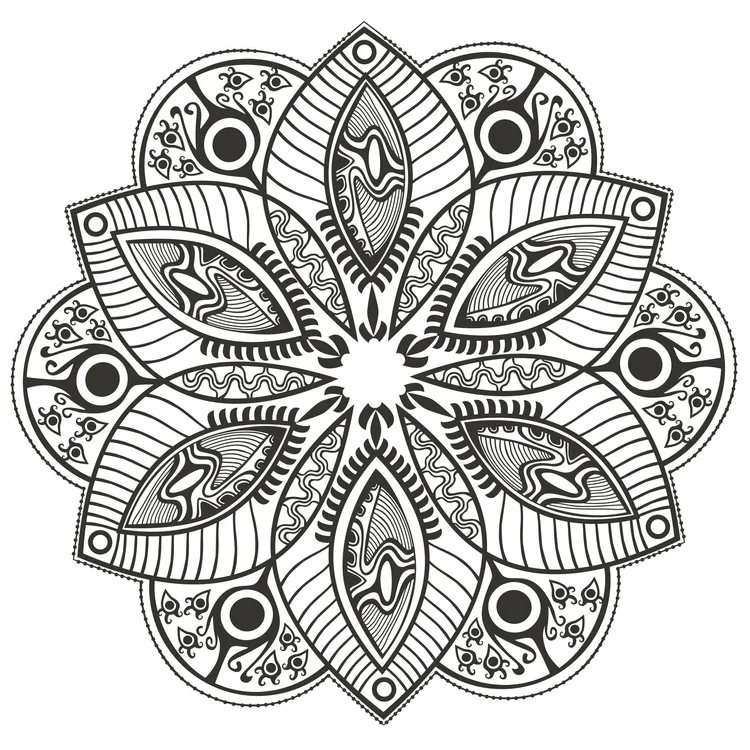
2. MANDALA SYMBOL
The colourful, intricate patterns provided by the mandala symbol signify harmony, wholeness, and balance. Mandala is a sanskrit word fir 'circle', a representation of the interconnectedness of all things and the never ending circle of life.
The outer circles of the mandala, in particular, symbolise the entire universe. Meanwhile, the squares inside of the symbol resemble different realities on Earth. Each layer symbolises another level of existence. The mandala is a yoga symbol that is an ideal symbol for you if you need a reminder that all of us are integrated. In other words, the mandala symbol reminds us that all of us are one whole being. And, like us and our universe, the mandala is very detailed, complex, but nonetheless beautiful.
To use the mandala symbol during yoga or meditation, simply hang a mandala yoga symbol in front of you while concentrating on it, you could paint your own artwork mala or download our hand-painted mandala.
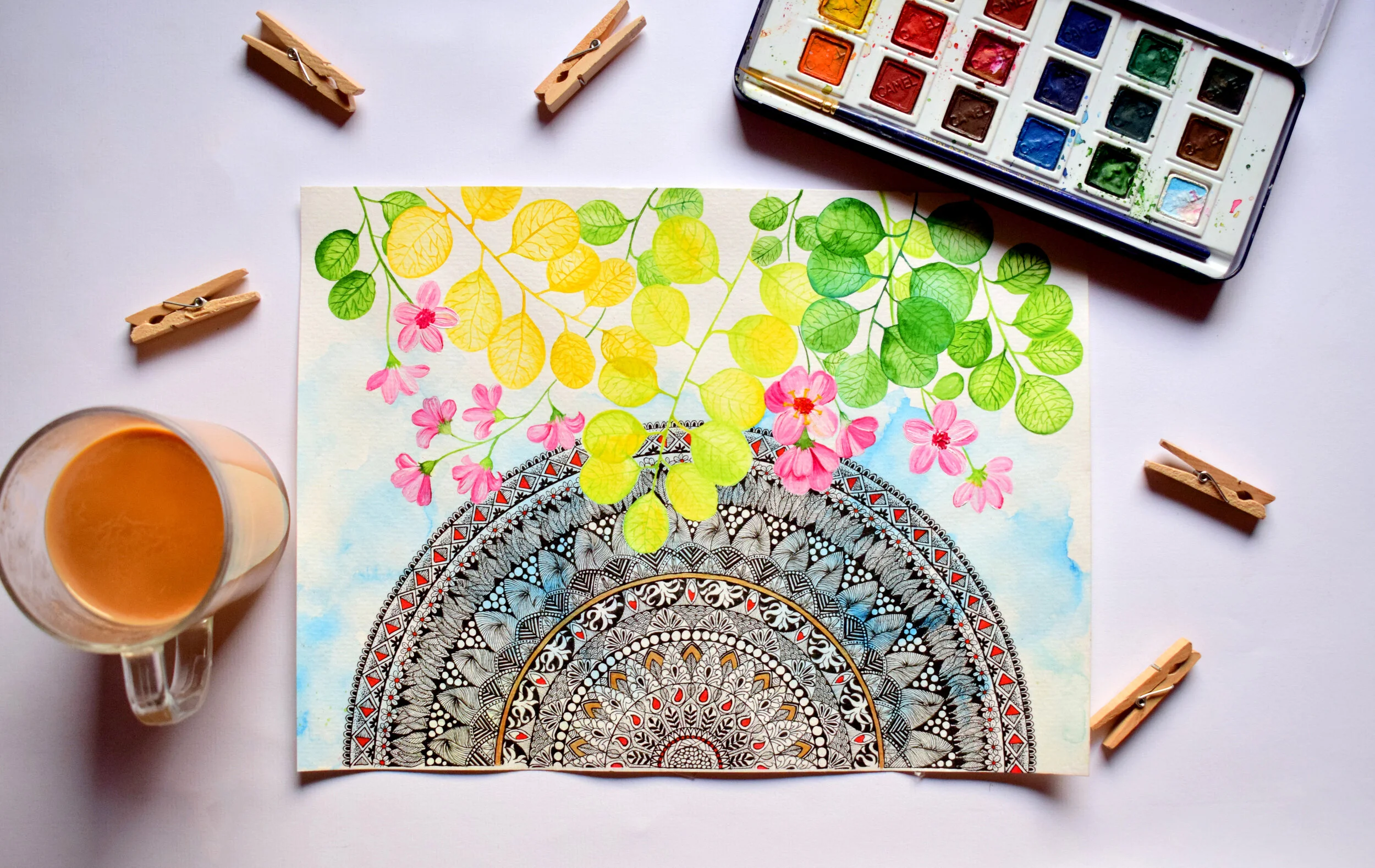
If you’ve ever shopped around for adult coloring books, chances are, you’ve seen a mandala. Mandalas are very popular in coloring books as they feature a plethora of beautiful, small, and complicated shapes. Many are enticed by the beauty of mandalas. However, little do some people know, mandalas are quite symbolic. “Mandala” translates to “circle” in Sanskrit, which in turn, resembles the universe. The mandala also signifies the harmony and unification between your body, mind, and soul.
You can use colours in your mandala as well as a form of colour therapy, painting and surrounding yourself with specific colours to help your journey.
Red: Power, strength
Orange: Intuition, change, creativity, awareness of the self
Yellow: Joy, laughter, wisdom
Green: Nature, physical balance
Blue: Meditation, peace, emotional balance
Purple: Spirituality
Pink: Romance, femininity
Black: Mysteriousness, individuality, deep cognition
In general, the mandala can help enlighten the mind and help us with the process of our healing.
Creativity with Mandala
1. Draw a mandala yourself.
Draw a perfect circle, tracing something circular like an old jar, then draw a dot in the centre of the circle. Draw four straight lines through the circle: down the middle to create two sides, across to create quarters, then two lines to create a perfectly symmetrical star shape. Draw two diagonal circles within the big circle. Start with the central dot and begin to draw symmetrical shapes and symbols, working out from there.
Once you have completed your mandala, spend some time in meditation with it, then you can rip it up or recycle the paper.
2. Create a Mandala in nature:
Collect and gather some items from nature - leaves, flowers, stones, twigs, soil, sands, feathers, shells, what you can find in your natural environment.
Begin by placing a single item in the middle of what will be your mandala, and work out from there, placing items symmetrically and methodically. Once you feel you have completed the process, pause to contemplate, meditate, then return all your pieces back to nature.
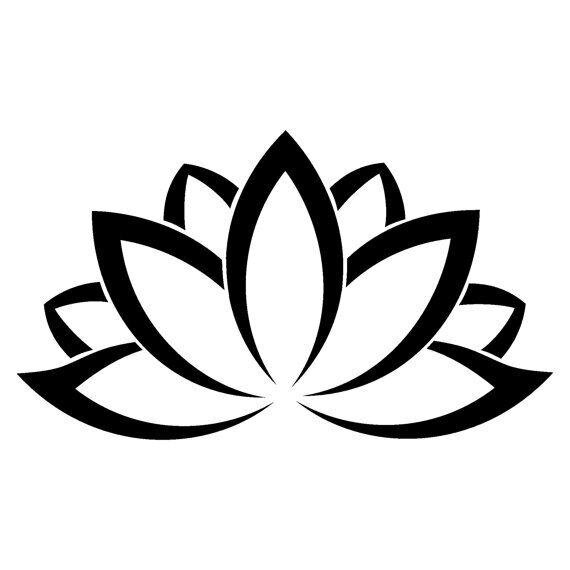
3. LOTUS FLOWER SYMBOL
As a yoga symbol, the lotus flower generally represents the wakefulness and enlightenment of the human mind. In Hinduism and Buddhism, lotus flowers generally resemble purity. However, different coloured lotus flower yoga symbols can mean different, more specific things. Pink lotus flowers and purple lotus flowers are most commonly featured as yoga symbols. Pink lotuses represent purity, love, and loyalty. Meanwhile, purple lotuses represent awareness and unification of the universe (Brahman).
Some other lotus colours and representations, while not as common, are as follows:
Red lotus = Romance, domination, power
Yellow or gold lotus = becoming enlightened
Blue lotus = mindfulness, soul
White lotus = pure thoughts, of spirit
Likewise, a closed lotus represents the time before enlightenment while an open lotus flower resembles having gained enlightenment. The lotus is such a beautiful yoga symbol to visualise in meditation the opening and closing of a lotus flower with the opening of the chakras.
Often, many think that the lotus flower represents temptation. After reading the Odyssey by Homer, one might recall that those who were tempted to eat the lotus would experience forgetfulness. Thus, many might presume that the lotus flower is evil.
In yoga, however, the lotus flower has a powerful and positive representation. The lotus flower itself starts off as a tiny, simple bud. Eventually, it grows, opens up, and reveals its truth. We too can be like a lotus flower. Like a lotus flower, we can open up our hearts, grow and flourish, and become enlightened, even in the grimmest and darkest of environments.
The lotus flower can resemble us and our true heart, soul, and mind as we navigate our spirituality and grow from it.

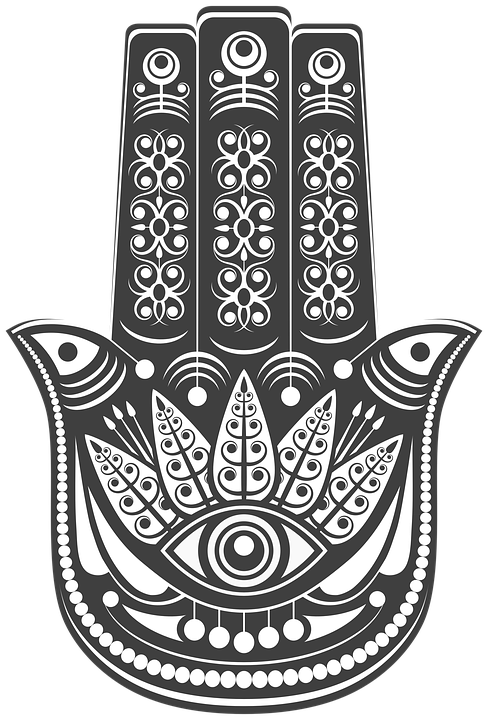
4. HAMSA / EVIL EYE SYMBOL
The Hamsa (“five fingers”/Hand of Fatima) is a universal yoga symbol that’s present around the world. However, in yoga, the Hamsa symbol resembles the harmony of the Chakras and the five senses. It is the hand symbol of yoga. In fact, each finger on the Hamsa hand correlates with its own chakra and element:
Thumb: Solar plexus chakra; fire element
Index finger: Heart chakra; air element
Middle finger: Throat chakra; Ethereal (space) elements
Ring finger: Root chakra; Earth element
Pinky finger: Sacral chakra; water element
Sometimes the Hamsa Hand is referred to as the evil eye as it’s said that it can ward off negative energy. The Hamsa symbol is particularly common on jewellery and tapestries to bring protection. While, again, yoga isn’t a spiritual practice it itself, many yoga symbols are in fact apart of different cultures and spiritual practices. The Hamsa (Hamesh, Khamsa, or Chamsa) Hand is one symbol that both yoga and many spiritual/religious practices share.
In Buddhism and Hinduism, the Hamsa Hand represents the Hand of God. The Hamsa Hand also is referred to as the Hand of Miriam (in Judaism) or the Hand of Fatima (in Islam). The eye in the center of the palm of the Hamsa Hand itself is a reminder to be on the lookout for evil. The Hamsa Hand is important as it helps protect against evil and jealousy, that is, when it’s facing upright (Abhaya Mudra).
However, when the fingertips face downwards (Varada Mudra), it resembles goodness, answers to prayers and wishes, and fertility.
5. BUDDHA
One of the most common representations in yoga is the symbol of Buddha.
The original Buddha (563 to 493 BC), Siddhattha Gotama, was the founder of, teacher of, and a major symbol in Buddhism. In modern times, Buddha represents someone who has obtained Bodhi, which refers to enlightenment or wakefulness. One who has achieved Bodhi will exhibit great intellect and moral. For instance, a Buddha will be honest, generous, non-judgmental, patient, and non-violent. As a result of gaining Bodhi, a Buddha becomes a spiritual guide for those below him.
The image of Buddha is important as it acts as a reminder of the three tenants in Buddhism:
Don’t be ignorant.
Refrain from hating others.
Never get angry.
Apart from the latter, the yoga symbol of Buddha reminds us to practice everything in moderation.
The Buddha symbol additionally reminds us that just like the original Buddha, we too can free ourselves from suffering to lead a better life. Thus, before engaging in a session of yoga, it’s a good idea to try to imagine yourself as Buddha or to visualize him in your head.
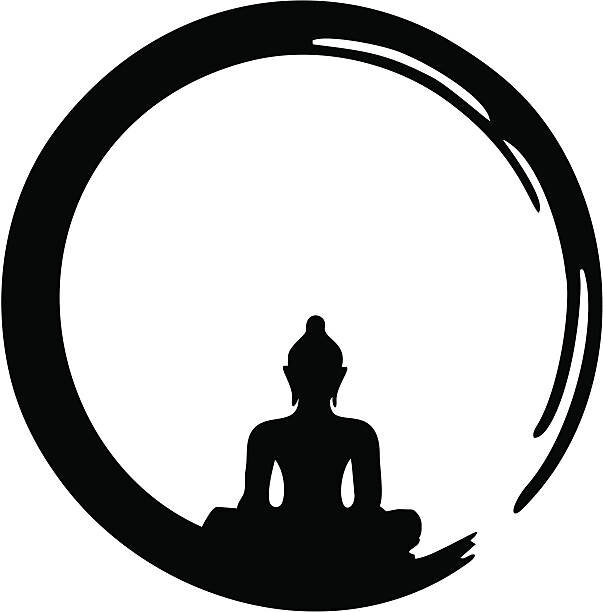














































1 comment
excellent work
AKANKSHA on